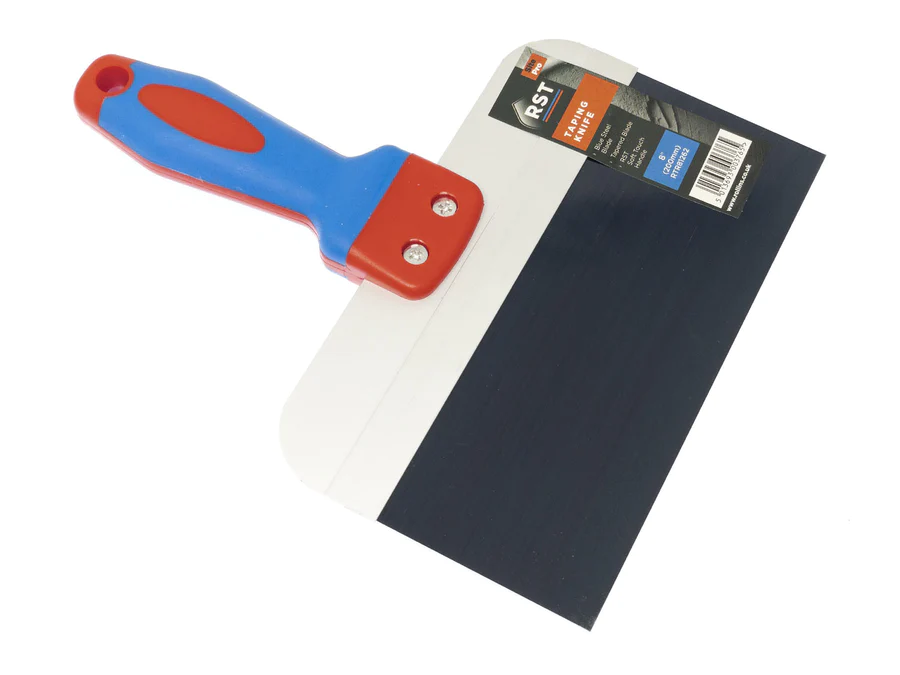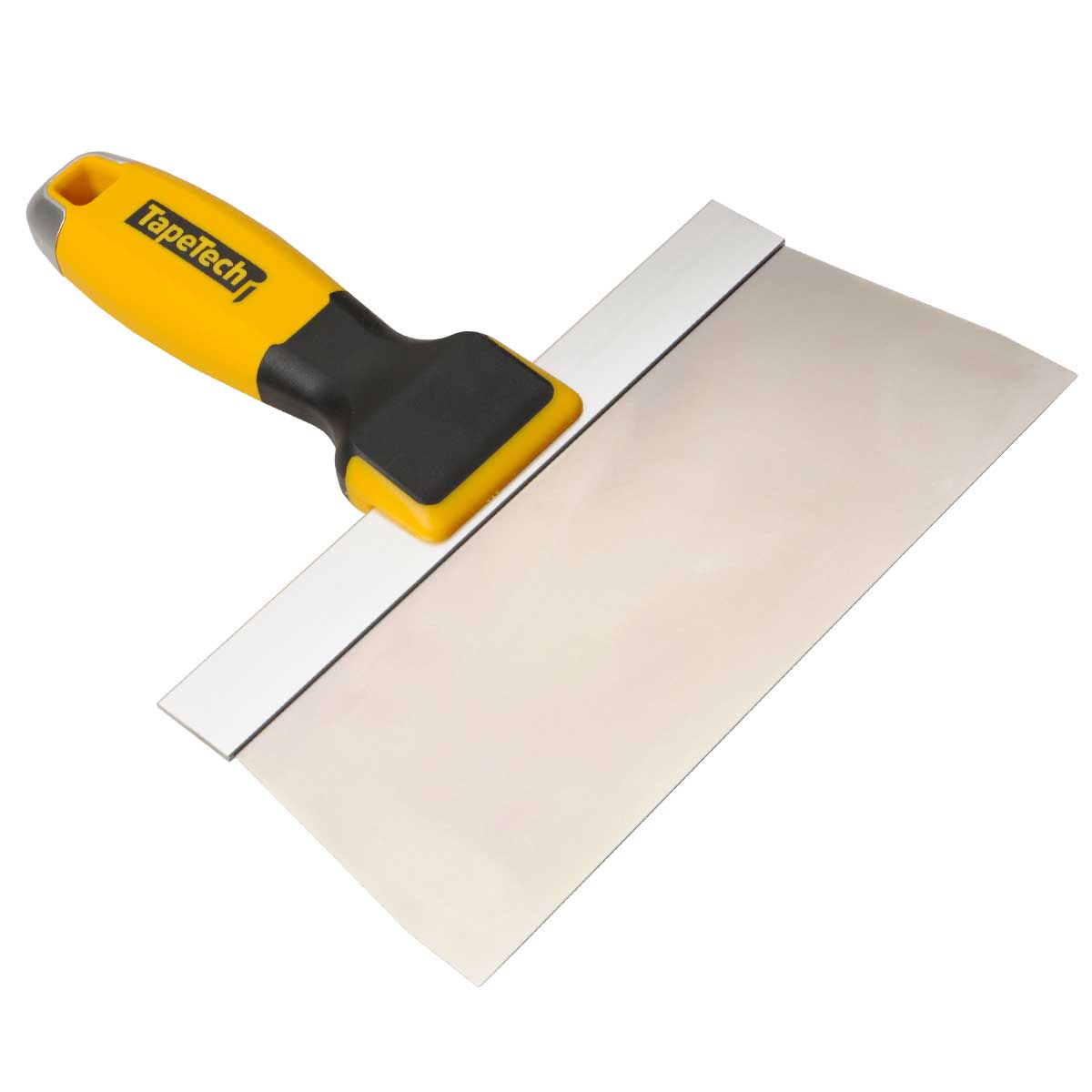Last updated on January 18th, 2024 at 09:47 am
Every drywall finisher needs a taping knife. Smooth walls require this multifunctional tool. Knowing how to use a tape knife will improve your drywall finishing skills,
whether you’re a pro or a DIYer. This article covers taping knife applications and techniques to help you master this essential tool.
What is the Basics: What Is a Taping Knife?
Construction, especially drywall installation and finishing, uses taping knives. It is a metal, flat-bladed tool with a handle. A taping knife’s flexible blade spreads and smooths joint compound or drywall mud.
Taping knives feather joint compound or mud over drywall seams and joints. Joint tape and joint compound are used to attach drywall sheets. This procedure hides joints and creates a smooth surface.
Taping knives range from 4 to 14 inches (10–36 cm) wide. Tasks determine taping knife size. Larger knives are utilized for broad areas, whereas smaller knives are for detailed work or confined spaces.
Taping knives are used to apply joint compound, scrape off excess compound, remove defects, and create texture patterns. Professional drywall installation and finishing requires these flexible equipment.
In other regions, a “taping knife” is called a “drywall knife” or a “joint knife.” Despite its name, the instrument serves the same purpose.
What is a Taping Knife Used For?

Taping knives are used for many drywall finishing operations. We’ll examine its main uses:
Taping Drywall Seams
Taping knives apply joint compound (mud) to drywall seams. After installing drywall panels, seams will be visible. The taping knife applies joint compound to these seams to integrate them. The taping knife smooths the compound and prepares the surface for finishing.
Joint Compound
Taping knives also distribute joint compound on walls. Mudding covers the entire drywall surface with a thin coating of compound to fix nail holes, dents, and scratches. The taping knife evenly distributes joint compound.
Feathering and Smoothing
Smooth the drywall joint compound for a professional finish. This requires a wide-bladed taping knife. You can feather the compound’s edges by holding the taping knife at an angle and exerting delicate pressure. This method creates a smooth surface for painting or decorating.
Reducing Compound
Joint compound often accumulates during mudding. Taping knives are ideal for eliminating superfluous material. Holding the taping knife at a shallow angle, you can scrape off unnecessary compound, producing a smooth and equal layer.
This stage is essential for polishing and preparing the surface for subsequent treatment.
Using Tape
Taping knives apply joint tape to drywall seams. The tape is placed over the seam compound and pressed into it with the taping knife to secure it. Running the taping knife along the tape removes air bubbles and ensures a strong tape-compound bond.
Making Texture
Taping knives can also texture drywall. The tape knife can create swirls, stippling, and patterns in joint compound. This technique gives walls and ceilings a textured look. Before applying techniques to the full surface, experiment and practice.
Perfect Corners
Corner knives, narrow-bladed taping knives, are designed for working in corners. These taping knives apply compound precisely in corners, creating a smooth transition between drywall panels. Corner knives’ thin blades and pointy tips enable precise corner work.
Nail Hole Filling
Taping knives also fix nail holes and other drywall flaws. Applying a little joint compound to the taping knife blade lets you smoothly fill nail holes and level them. This process ensures a precise finish and a uniform wall appearance.
Cleaning and Scraping
Taping knives can also A taping knife’s flat, robust blade scrapes off excess compound, hardened mud, and paint drips off drywall. This smooths and cleans the surface before finishing.
Final touches
Taping knives are also handy for general drywall finishing. It can smooth rough areas, sharpen edges, and touch up blemishes from the mudding and sanding processes. Taping knives are essential for professional-looking drywall finishing due to their versatility.
Taping Knives FAQ
Which drywall taping knife should I use?
Consider blade width and material when choosing a taping knife for drywall finishing. A 6–8-inch taping knife works for most purposes.
For corners and tight places, a narrower taping knife or corner knife is better. For longevity and corrosion resistance, stainless steel blades are suggested.
What size taping knife should I use for my project?
Project size and task determine tape knife size. A 10–12-inch taping knife covers more surface area in one stroke for larger surfaces and basic mudding.
Taping corners or fixing nail holes requires thinner taping knives (4–6 inches). Taping knives of various sizes are useful for drywall finishing.
Can I use a taping knife for other than drywall finishing?
Taping knives are mostly used for drywall finishing, but they have additional uses. They can be used to spread and smooth putty or spackle on wood surfaces, repair damaged plaster, or even for craft projects.
What are frequent taping knife mistakes?
Avoid taping knife mistakes that can ruin your drywall finish. Too much pressure might push out the compound, creating an uneven surface.
A dull or broken taping knife can leave streaks or grooves in the compound. To avoid dried compound, clean your taping knife after each usage.
Does a taping knife require particular skills?
Taping knives take practice and drywall finishing knowledge. Practice mudding, feathering, and tape knife handling. You can master professional-looking outcomes with practice.
How do I clean my taping knife?
Taping knives must be cleaned and maintained for best effectiveness. usage a putty knife or scraper to remove compound from the blade after usage. To remove residue, wash the taping knife with warm water and mild detergent. Dry the blade before damage.
A fine-grit sharpening stone can sharpen or replace a dull or nicked blade. Maintaining your taping knife will preserve its longevity and efficacy in future jobs.
Conclusion
Finally, drywall finishers need a taping knife. Its versatility and vast range of applications make it essential for smooth, professional results. Taping knives are essential for taping and mudding drywall joints, spreading joint compound, creating texture, and finishing touches.
Choose the proper size and type of taping knife for your job. Avoid pressure and dull blades. Mastering a taping knife will improve your drywall finishing skills.
So, when finishing drywall, bring a good taping knife. Its precise application, easy spreading, and rapid compound removal will help achieve a faultless and professional finish.
